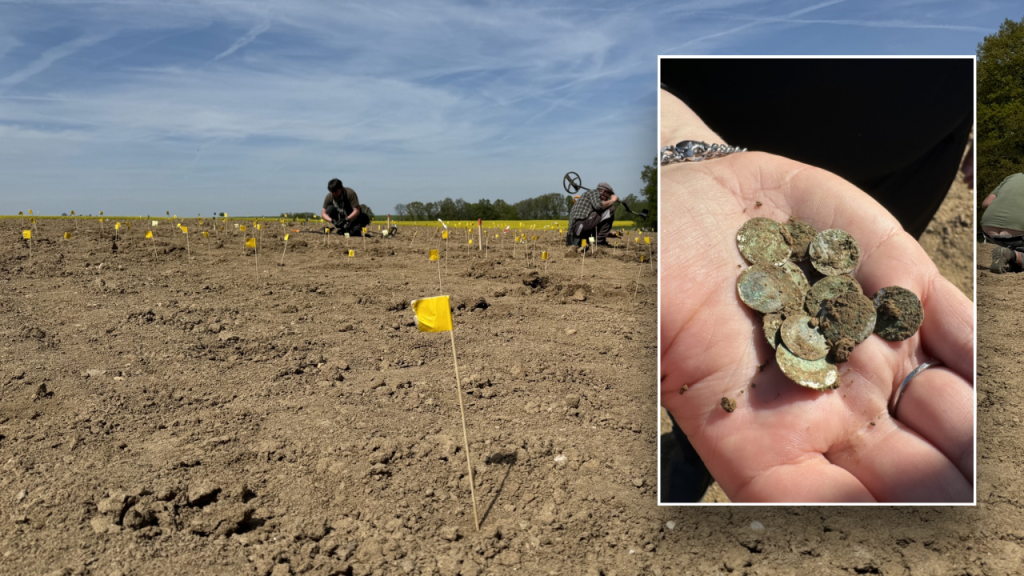A recent once-in-a-decade discovery in Kutná Hora, Czech Republic, involved a European woman stumbling upon buried treasure from the Middle Ages. The treasure, consisting of over 2,150 silver coins minted between 1085 and 1107, was believed to have been manufactured in Prague and imported to Bohemia. The discovery was made of coin alloy containing an admixture of copper, lead, and trace metals, which can help determine the origin of the silver used. Archaeologist Filip Velímský explained that the treasure was hidden during a time of political instability, with battles common during the period. The depot could have been cash for paying wages or spoils of war.
The value of the ancient coins was described as “unimaginable” during the time period of the 11th–12th century. Although data on the purchasing power of contemporary coins is lacking, it was considered a huge and unavailable amount for an ordinary person. The discovery is being called “one of the largest finds of the last decade” by Czech officials, with over 2,000 silver coins representing a significant amount in their time. Archaeologists are processing the coins by putting them through x-rays and determining the material they are made from. An exhibit featuring the artifacts is expected to debut in 2025.
The Institute of Archaeology of the Czech Academy of Sciences (ARUP) stated that battles were common during the period when the treasure was hidden, with disputes among members of the Přemysl dynasty about the princely throne of Prague. The trove was stored in a ceramic container that was destroyed over the years, but archaeologists were able to discover the bottom of the container. It is believed that the coins could have been used for paying wages or as spoils of war during the political instability of the time. The Czech officials are now working with historians to process the coins and prepare them for the exhibit in 2025.
The unique composition of the coin alloy, which contains silver, copper, lead, and trace metals, provides valuable insight into the origin of the silver used to mint the coins. This information can help to shed light on trade routes and economic interactions during the Middle Ages. Velímský compared the value of the ancient coins to winning a million in the jackpot, emphasizing their significance and rarity during the 11th–12th century. The discovery of such a large number of silver coins is a rare occurrence and showcases the historical importance of Kutná Hora in the region.
The discovery of the buried treasure in Kutná Hora has sparked significant interest among archaeologists and historians, who are now working to process the coins and prepare them for public display in 2025. The artifacts provide a unique glimpse into the economic and political landscape of the Middle Ages, highlighting the importance of the region during the time period. The treasure is being hailed as a significant find and is expected to attract attention from researchers and enthusiasts interested in medieval history and numismatics. The exhibit in 2025 will offer visitors a chance to see and learn about the valuable coins and their historical significance in the context of European history.













